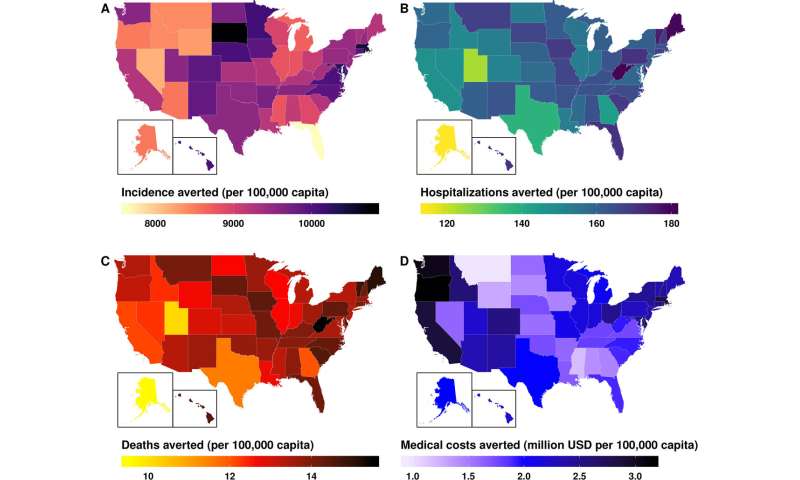

A team of researchers from the Yale School of Public Health, the University of Maryland School of Medicine, the University of Texas and the University of Florida has used math models to show that the development of a universal influenza vaccine could save tens of thousands of lives annually. In their paper published in Proceedings of the National Academy of Sciences, the group describes how they used mathematical modeling to evaluate the impact of a universal flu vaccine and what they found.
Every year, millions of people in the U.S. become infected and tens of thousands die from flu. And as the researchers note, the efficacy of flu vaccines is approximately 44 percent—leaving a significant number of people at risk of being infected, even if they get a shot. They note also that the National Institute of Allergy and Infectious Diseases in the U.S. recently announced that a universal vaccine with an efficacy rate of approximately 75 percent had been developed, sparking hopes of greatly reducing flu infections. They further note that the U.S. government has pledged more than a billion dollars to subsidize the development of a universal vaccine that would be one hundred percent effective. In this new effort, the researchers have created and used models to show how many people would be spared infections and how much money would be saved if such a vaccine were developed and used.
Source: Read Full Article